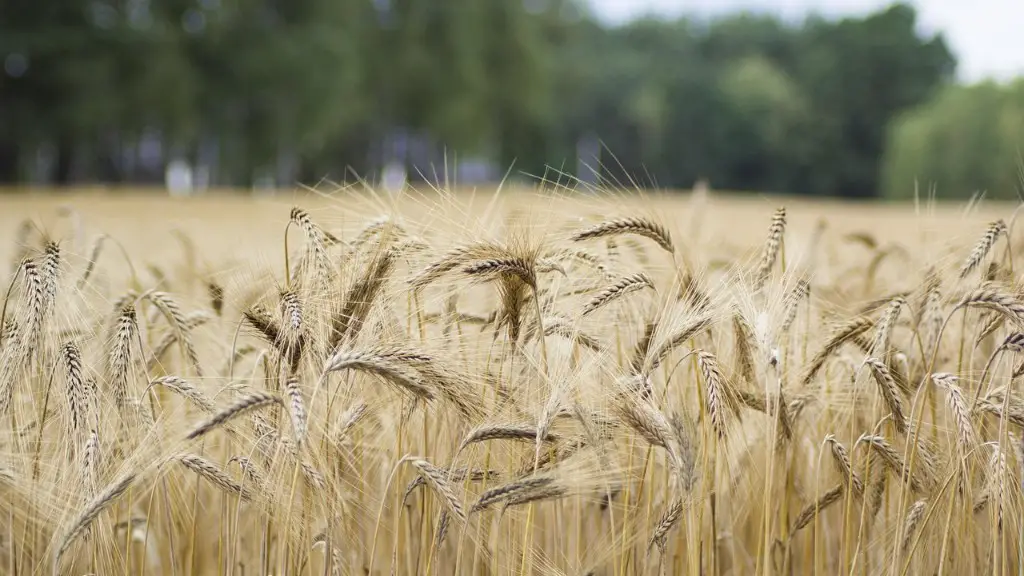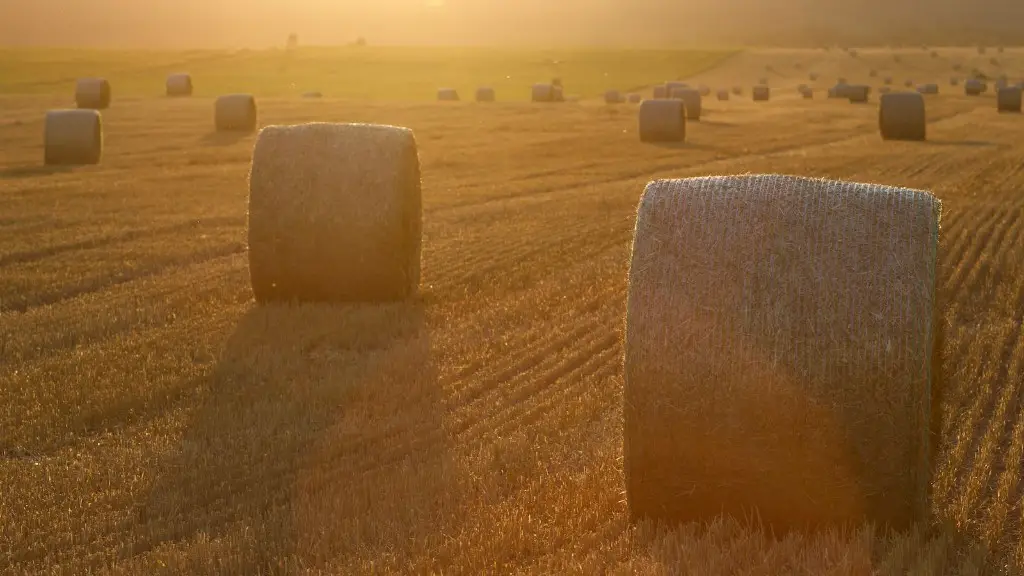Agriculture constitutes one of the chief sources of atmospheric greenhouse gas (GHG) emissions. Burning fossil fuels, deforestation and tilling of land all contribute to the production of GHG emissions from agriculture. On a global basis, agriculture is responsible for 10–12% of all GHG emissions, making it the third-largest source of emissions after electricity and transport.
There is an increased focus on the contribution of agriculture to climate change due to its potential to be a major source of emissions reduction. This is due to the fact that many GHG emissions are produced directly or indirectly by agricultural activities. In addition, agricultural land can store carbon in the soil, helping to reduce the net emissions from agricultural activities.
Sources of GHG emissions from agricultural production include burning of fossil fuels (for example, tractors and other farm machinery use combustion engines), tilling of land (which releases carbon dioxide from the soil), fertilizers (which release nitrous oxide from the soil) and livestock (which produce methane from their digestive systems). Unsustainable practices such as deforestation for agricultural lands, as well as land management practices, also contribute to GHG emissions.
Furthermore, agricultural lands themselves can become a source of emissions if they are managed in an unsustainable manner. Poor land management practices can lead to soil erosion, which causes soil to be lost, along with the carbon stored within it. In addition, overgrazing by livestock and the overuse of chemical fertilizers can lead to degradation of the soil, reducing its ability to store carbon.
The impact of agriculture on climate change can also be seen in the most vulnerable communities around the world, where small-scale farmers are unable to afford modern farming practices, leading them to use more traditional methods which are more likely to contribute to emissions. This is particularly true in the Global South, where agricultural production is more likely to face a range of environmental challenges such as water scarcity and land degradation.
There are a number of ways to reduce the impact of agriculture on climate change. One of the most effective strategies is to shift to practices and technologies that use fewer GHG-emitting inputs, such as low or no till farming and alternative sources of energy for farm machinery. Furthermore, reducing and avoiding deforestation through sustainable land management practices can help to conserve carbon-storing soil. Other strategies to reduce GHG emissions from agriculture include improving efficiency in how fertilizer and animal feed are used and reducing food waste. Viewing agriculture as a potential solution to climate change, rather than a source of emissions, is essential to reducing global emissions and tackling climate change.
Effects of Agriculture on Biodiversity
Agriculture can have a major impact on biodiversity, both directly and indirectly. The direct effects are largely due to land conversion, which can lead to the destruction or fragmentation of habitats, the introduction of alien species, and the intensive use of resources. These direct impacts can lead to the loss of biodiversity and the degradation of ecosystems, resulting in a reduction in the diversity and abundance of species.
Indirect effects of agriculture can also have a significant impact on biodiversity. For example, modern farming practices often require the use of chemicals, such as fertilizers and pesticides, which can be damaging to both plants and animals, leading to a decrease in biodiversity. In addition, the loss of natural habitats due to agricultural expansion can also have a significant impact on biodiversity, as it reduces the amount of viable habitat available for species.
Agriculture can also have an effect on biodiversity through climate change. As agriculture is one of the major sources of greenhouse gas emissions, it can lead to an increase in global temperatures, rising sea levels, and an increase in extreme weather events. These changes can be devastating for certain species, as it can lead to the destruction or fragmentation of their habitat and ultimately lead to their extinction.
Food Security and Agriculture
Agriculture is essential for food security, which is defined as the availability, economic accessibility, and nutritional quality of food. It is an interconnected system which includes crop production, livestock rearing, and the ability to store, process and distribute the food. As such, agriculture is fundamental in allowing individuals and families to meet their basic needs and have a reliable source of food.
Agriculture is also critical in providing food security on a global scale, as it plays a major role in determining the global food supply. It provides essential raw materials for food production, such as grains, fruits and vegetables, and is also involved in processing and distributing food around the world.
However, food insecurity can arise when agricultural production is insufficient to meet the needs of the population. This can occur due to a range of factors, such as climate change, land degradation, and the overuse of inputs such as water, fertilizers, and pesticides. In addition, poverty and inequality can also lead to food insecurity, as those who are already at a disadvantage are likely to suffer the most from food shortages.
In order to improve food security, it is essential to increase agricultural production, including improving yield and reducing food waste. Efforts must also be made to ensure that agricultural products are accessible and affordable for all, not just for those who are able to afford it.
Implications of Food Waste
Food waste has a significant impact on agriculture, as it results in loss of potential food production and rising costs associated with distribution. The most common causes of food waste are overproduction, over-stocking, spoilage, and discard at the consumer level. This waste can lead to serious economic losses to the food industry, as well as environmental problems such as methane production, water contamination, and land use issues.
Food waste also has social and economic implications, particularly for those living in poverty. For example, food waste can lead to a decrease in available food for those who are in need, leading to malnutrition and even starvation. In addition, it can also lead to an increase in poverty, as those already struggling are further deprived of resources.
Furthermore, food waste contributes to global warming, as the breakdown of organic matter in landfills produces methane, a greenhouse gas that is considerably more potent than carbon dioxide. This methane is then released into the atmosphere, resulting in the trapping of heat and contributing to the warming of the planet.
In order to reduce food waste and its associated consequences, it is essential to address the root causes of this problem. This can be achieved through better food production and inventory systems as well as improved consumer education regarding proper food storage and preparation.
Role of Sustainable Agricultural Practices
Sustainable agricultural practices can help to ensure that agricultural activities are carried out in a way that is both environmentally responsible and economically viable. Sustainable agriculture seeks to minimize environmental impacts, conserve natural resources, and reduce or avoid the use of harmful chemicals, such as fertilizers and pesticides. Furthermore, it also seeks to ensure equity and social justice, particularly for those working in the agricultural sector.
One of the most effective ways to achieve sustainable agriculture is through the use of agroecology, which is the application of ecology to the management of agricultural ecosystems. Agroecology focuses on the interactions between plants and animals, as well as between them and the environment, in order to design systems that are more resilient and productive. In this way, agroecology can help to reduce the need for chemical inputs and ensure that the environment is not degraded.
The use of cover crops, minimum tillage, and other soil conservation methods can also help to reduce the environmental impacts of agriculture and increase its sustainability. These practices can protect the soil from erosion, improve its water-holding capacity, and add organic matter to the soil. This improves soil fertility and reduces the need for inputs like fertilizers, resulting in a more efficient and resilient system.
In addition, increasing the diversity of crops can also help to promote a more sustainable agricultural system. Diverse crop rotations can help to reduce the reliance on monocultures, leading to a more stable system that is not susceptible to pests and diseases. Furthermore, it can also help to create more resilience in the system, as different crops can help to mitigate the effects of drought, excessive heat, or other environmental conditions.
Impact of Subsidies on Agriculture
Agricultural subsidies are a form of government financial assistance which are used to support farmers and maintain food security. They are typically provided to help farmers with costs such as fertilizer, fuel and farm supplies. However, the efficacy of such subsidies has been questioned, as they can have a range of adverse consequences, such as pricing farmers out of the market, increasing inequality in food supply, and adverse environmental effects due to their contribution to GHG emissions and resource depletion.
In terms of the environmental impact, subsidies can have a negative effect on sustainable agricultural practices. This is due to the fact that subsidies are often provided to farmers who use intensive farming practices, such as chemical fertilizers and pesticides. This can lead to increased water and soil pollution, as well as loss of biodiversity due to the destruction of natural habitats.
Furthermore, subsidies can also have an impact on food security, as they can lead to a reduction in domestic farming, resulting in less food available for regions which are already in need. This can lead to an increase in the cost of food, making it less accessible for those living in poverty or in food-insecure regions.
In order to reduce the negative impacts of agricultural subsidies, it is essential to ensure that the subsidies are targeted at sustainable practices and technologies, rather than those which are harmful to the environment. This could involve providing incentives for sustainable agriculture, focusing on increased efficiency, and incentivizing the adoption of technologies which reduce GHG emissions.
Potential of Climate-Resilient Agriculture
Climate change is likely to have a major impact on agriculture, leading to a decrease in crop yields, reduced soil fertility, and an increase in pests and diseases. In order to ensure food security, it is essential to develop agricultural systems which are resilient to the impacts of climate change, such as unpredictable weather patterns, higher temperatures, and changes in the availability of water.
Climate-resilient agriculture involves the use of a range of strategies and technologies which can help to mitigate the effects of climate change on agricultural production. These include improved farming practices, such as reducing tillage, cover cropping, and the use of drought-tolerant varieties. In addition, new technologies, such as precision agriculture, can help to reduce input costs and ensure optimal yields even in difficult conditions.
Climate-resilient agriculture also involves an iterative learning process, in which new approaches and strategies are continually tested in order to assess their effectiveness. This helps to ensure that new technologies and practices can be adapted and improved to better suit changing conditions.
The development of climate-resilient agriculture is essential to ensure the sustainability of food production and protecting the livelihoods of small-scale farmers. It is also essential to mitigate the impacts of climate change, as climate-resilient systems can help to ensure future food security, especially in the face of increasingly unpredictable conditions.
Role of Technology in Food Production
The use of technology has the potential to revolutionize the way in which food is produced, from the farm to the table. Technological advances, such as precision agriculture and artificial intelligence, can help to improve the efficiency, quality and sustainability of food production.
For example, precision agriculture makes use of sensors and other technologies, such as drones and tractors, to ensure optimal yields and reduce the use of inputs such as fertilizers. Furthermore, artificial intelligence can be used to detect pests, diseases and weeds in crop production, and to guide decisions regarding planting, fertilizing, and harvesting.
In addition, technology can also be used to improve the process of food distribution and storage, reducing the amount of waste and ensuring that food is accessible and affordable to all. This can be achieved through new innovations, such as on-demand delivery and efficient storage systems.
Furthermore, technology can help to reduce the environmental impacts of food production. For example, autonomous farming robots can be used for precision weeding and micro irrigation, leading to reduced energy and water use, and fewer GHG emissions. In addition, robotic systems can also be used to minimize the need for human labor, leading to a reduction in agricultural labor costs.
Finally, technology can also be used to improve the nutrition, quality and safety of food. New technologies, such as gene-editing and 3D-printing, can be used to produce healthier and more sustainable food products. In addition, biotechnologies can also be used to extend the shelf life of food products, reduce waste, and increase the availability of food in areas of need.


